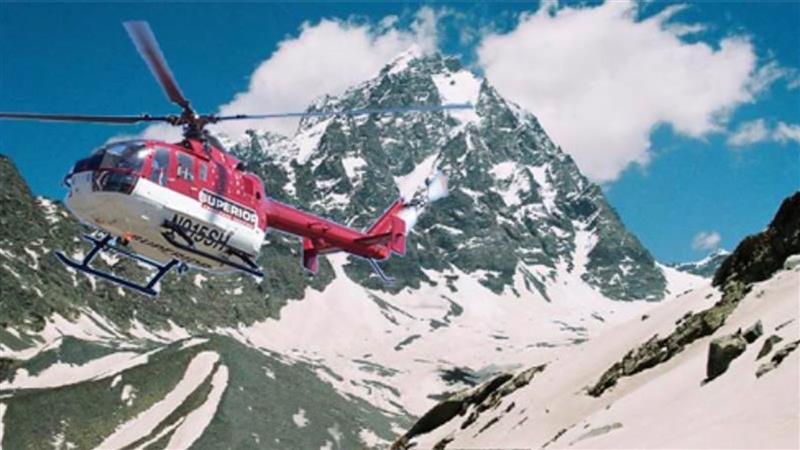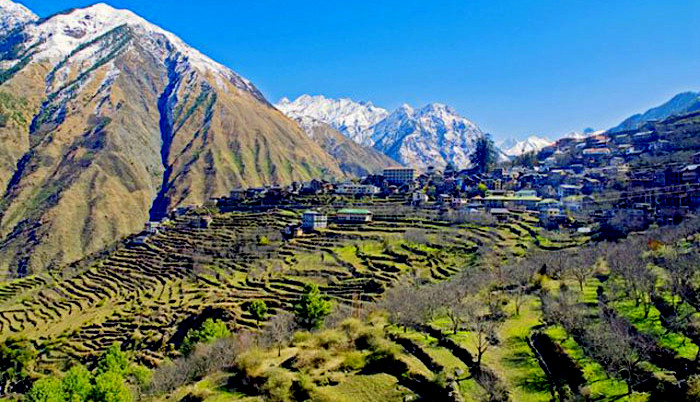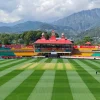Manimahesh Kailash Yatra
The mesmerizing Manimahesh Kailash– One of the 5 Kailash where Bhagwan Shiva lives.

About Manimahesh Kailash Yatra
A holy pilgrimage known as the Manimahesh Yatra is made to the base of the Manimahesh Kailas in Himachal Pradesh’s Chamba District. After Shiva married Parvati, it is said that Shiva created Manimahesh. The crystal or gem that rests atop Shiva’s (also known as Mahesh) head is symbolised by the term Manimahesh. Manimahesh’s summit has never been attained, and it continues to be a mystery to human sight.
The location, which is dedicated to the Hindu God Lord Shiva and is regarded as the Hindu God’s dwelling, has been designated by the government as a state-level pilgrimage. Janmashtami is the day the trip starts, and Radha Ashtami is the day it finishes. This trek is attended by hikers, environment enthusiasts, and mountain walkers from all over the world, not only pilgrims. One of the most stunning climbs in the world, the trail offers expansive panoramic views due to the mountain peak’s virgin status.
Manimahesh Lake, located in Himachal Pradesh’s Pir Panjal Range at an elevation of 3,950 metres at the foot of Manimahesh Kailash Peak, which soars to a height of 5,653 metres, is regarded as one of the country’s holiest lakes. The majestic peak is thought to be the Hindu deity’s dwelling, and the lake is a well-known Hindu pilgrimage destination dedicated to Lord Shiva. On the auspicious day of Janmashtami, hundreds of pilgrims from all over the nation begin their spiritual journey, which is said to end on Radha Asthami.
The climb to Manimahesh Kailash is one of Himachal Pradesh’s most picturesque hikes, and it even attracts novice hikers, mountaineers, and environment enthusiasts from all over the world. The Manimahesh Kailash Peak, often referred to as Chamba Kailash, is one of the unclimbed mountains in the Indian Himalayas and is situated in the Budhil valley about 26 km from Bharmour. A tributary of the River Bidhil, the crystal-clear water of the Manimahesh Lake is drawn from the serpentine glacier of the Chamba Kailash Peak.
From Hadsar, which is a drive from Dharamshala, the Manimahesh Kailash Trek ascends to Dancho, which is perched at a height of 2,280 metres. From Dancho, the ascent is gentle and passes through a valley filled with wild flowers and medicinal herbs before reaching the last approach that over the lake’s glacier. A desolate terrain with little steep mounds, rocks, and dried shrubs is encircled by the Manimahesh Lake. The route continues to descend to Dancho before branching off in Dharamshala.
The trekkers’ journey to Manimahesh Kailash starts in the middle of May and lasts through October. One of the simpler treks in the Himachal Himalayas, it takes about 9 days to complete starting in Delhi.
Meaning of the Manimahesh Kailash Yatra

The Yatra purifies both the body and the psyche. Although the Yatra is regarded as a difficult journey, it is rewarded with the most breathtaking scenery: a tranquil lake with the snow-capped Kailas Mountains in the background. One is completely surrounded and enveloped by the spiritual atmosphere of the mountain. The yatra is accompanied by a procession called “holy Chhari” in which sadhus and pilgrims carry holy sticks on their shoulders. With the accompaniment of music and Shiva-praising songs, the Chhari trek moves forth.
Highlights of Manimahesh Kailash Yatra
- Visit Manimahesh Lake and ask Lord Shiva for his blessings.
- Spend the night camping by Manimahesh Lake while surrounded by stunning mountains.
- The reflection in the lake, which looks like a saffron Tilak, depicts a rare moment where the first sun rays hit the Mani Mahesh peak.
- While hiking, take in the stunning valleys and mountains.
Optimal Season for Manimahesh Kailash Yatra Trek
From mid-June through mid-October
There is a good likelihood that hikers will see snowfall at high passes until July. However, the amount of snow drastically decreases towards the end of August. While there may be rain in the Kullu-Manali valley as the months go on, Spiti’s high passes continue to have sunny skies.
Moving on, the daytime high and low in September may be 12 and 20 degrees Celsius. The temperature may drop to negative (-2 to 6 °C) during the night, and there is a sliver of a chance that it will snow. Beginning in October, daytime temperatures range from 12 to 18 °C, while evenings and nights are noticeably colder (-6 to -4 °C).
The Manimahesh Kailash Yatra Trek location
Manimahesh, a high altitude lake in Himachal Pradesh, is frequently referred to as Dal Lake. In the Pir Panjal Range of the Himalaya, the lake is situated at an elevation of 4,080 metres (13,390 feet), not far from Manimahesh Kailash Peak. The lake was made by Lord Shiva when he wed Goddess Parvati, according to the incident described in the mythical literature.
Lord Shiva is said to have conducted penance here for seven hundred years before the water began to flow from his knotted hair and eventually acquired the shape of a lake. The Mani Mahesh Lake is the second-most sacred lake after the Tiber’s Mansarovar Lake. As ‘Manimahesh Yatra’ begins in September and October, the lake draws a lot of pilgrims during these months.
The Manimahesh kailash Yatra trek

The trip begins in the Himachal Pradesh village of Hadsar, which is close to the Chamba district. The path leads to the mountain settlement of Dancho from Hadsar. Even novice climbers can complete this hike because of the slope’s gradualness and lack of difficulty. Additionally, there are stunning vistas of the Valley of Flowers and short, bushy plants with therapeutic properties nearby.

There is a last point that divides the lake’s pearly white glacier not far from here. The majestic Manimahesh Lake is surrounded solely by mountainous barren mounds, few granite boulders, dry shrubs, etc., in a harsh and barren landscape with snow-covered white plains as its backdrop. Once you get to the lake, you can get to Dharamshala by travelling downwards.
Route of the Manimahesh Kailash Yatra
The Manimahesh Yatra starts on Janamasthmi, also known as “Chota Snan,” and lasts for a total of 15 to 20 days. It concludes on Radha Ashtami, also referred to as “Bada Snan.” You can complete this walk using one of three paths.
1. Bharmour – Hadsar Route
- The pilgrims begin this trek at Bharmaur Village by bathing in the sacred pond of the Bharmani Temple, also known as the Bharmani Temple Kund.
- You can take a local bus from Bharmaur to the settlement of Hadsar.
- Hadsar is where the journey to Manimahesh Lake begins. There are several places where you can stop on the way to the lake to rest, including restaurants, campers, and tents.
- The optimum location for the following major stop is Dhancho village. It takes 3 to 4 hours to travel the 5 to 6 km from Hadsar to Dhancho on foot. There are a lot of Bhandaras or Langars along the path that will provide you free food.
- The path that curves sharply to the left from Dhancho ascends to Gauri Kund, which is the second-to-last stop. Shiv Gharat is the name of this route. In addition to the stunning environment, you can hear the wind blowing against the mountains, which is said to sound like the rhythm of drums. This path goes to Gauri Kund, which is where Goddess Parvati is said to have taken a bath. Men are not allowed to even approach the pond, but it is deemed holy for women to swim in it.
- Manimahesh Lake is just one kilometre away from Gauri Kund. The impressive Manimahesh peak may be seen in the distance from the lake. In order to receive Lord Shiva’s blessings, pilgrims frequently take a bath in the lake’s chilly waters.
2. Manimahesh Parikrama Via Kugti Village
The route through Kugti Village is thought to be more difficult and should only be attempted by experienced hikers. This one travels 38–40 kilometres in total and does a full circle around the Manimahesh summit. This approach enables you to really appreciate how abundant nature is. You can gaze upon the verdant valleys, the small settlement of Kugti, the bubbling streams, the rugged landscapes, and the powerful glaciers.
- After having a plunge in the Bharmani Temple Kund and travelling to Hadsar, this trek route also begins in Bharmour.
- However, once you arrive at Hadsar, you must continue walking to Dharol or Kugti Village rather than stopping at Dhancho as the following stop. You can either trek or rent a car to get here. The entire walk to Kugti will take between three and four hours.
- From Kugti, the actual hike begins. You’ll arrive in Dhalotu over a path lined with picturesque river streams and tall forests. It is advised that you bring a guide with you.
- Alyas is the next destination, where you can pitch your tent and spend the night. If you are trekking during the Yatra, you will notice tents that the people have already set up. A large rock known as Hanuman Garhi or Hanuman Shila, which is saffron in hue, can be used to identify Alyas.
- You may get to Jotnu Pass from Alyas. To get at your goal when the weather is still beautiful and clear, it is advised to begin this walk early in the morning (ideally at 7:00 AM). It can start snowing on the pass as the day goes on.
- The penultimate stop is Jotnu Pass. You can see the Manimahesh lake from here, and it won’t take you long to get there. You will also pass via Dham Ghodi and Kamal Kund on the way
3. By Helicopter

Naturally, this is the simplest method of getting to Manimahesh Lake. This is not only simple, but it’s also the most exciting. However, this route is only accessible during the Manimahesh Yatra and is intended in particular for pilgrims who have trouble completing the walk. It just takes a total of 7 minutes to travel by helicopter from the base station in Bharmour hamlet to Gauri Kund. The pilgrims must walk 1 km to go through Gauri Kund, which is located near Manimahesh Lake.
The Manimahesh Kailash Yatra rituals

When the sadhus and pandits announce the event through a procession of “Holy Chhari,” the rituals and the magnificent Manimahesh Yatra commence. In accordance with this tradition, pilgrims and sadhus start their trip barefoot while carrying a stick on their soldiers. Following this procession, hymns are recited and sung in honour of Lord Shiva. Stops along the way are made for relaxing and halting.
The pilgrims carry out a number of rituals and ceremonies all through the night after reaching the lake. The following day, they bathe in the revered lakes of Manimahesh—Siv Karotri for men and Gauri Kund for women.
How to Reach Manimahesh Kailash Yatra

The last settlement before Manimahesh is Bharmour. Manimahesh is located 26 km from Bharmour, of which 13 km may be travelled by cab and 13 km by foot. Although Bharmour is easily accessible by car from several popular tourist locations, the closest railway station is 180 km away. Pathankot Cantt train Station, formerly known as Chakki Bank Railway Station, is the closest train station.
By Train: You can travel to Manimahesh by rail; the closest station is Pathankot Cantt (180 kilometres from Bharmour).
By Bus : Buses are a convenient way to travel to Manimahesh and depart from Pathankot (180 km from Bharmour), Dharamshala (230 km), Dalhousie (102 km), and Chamba (60 km).
By Cab : Taxi service is available from Delhi, Amritsar, Jammu, Pathankot, and other locations in Himachal Pradesh to get you to Manimahesh. You may actually take a taxi from any location to Bharmour.
Legends of Manimahesh Kailash Yatra
The god who preside over this fair or jatra is Lord Shiva. It’s thought that he lives in Kailash. The manifestation of Lord Shiva is thought to be a rock formation on Kailash that resembles a Shivling. Locals refer to the snowfield at the mountain’s base as Shiva’s Chaugan.
It is believed that Mount Kailash is unbeatable. Despite the fact that many people have successfully scaled much larger heights, such as Mount Everest, no one has yet been able to reach this summit. According to one legend, a Gaddi once attempted to ascend the mountain while leading his flock of sheep. He and his sheep are thought to have been turned to stone.He and his sheep are thought to have been turned to stone. The remains of the unfortunate shepherd and his flock are thought to be located in a succession of smaller peaks that sit below the main peak.
Another tale claims that a snake too tried to reach this peak but failed and was subsequently turned into stone. Additionally, it is thought that only when the Lord is pleased may worshippers see the Kailash peak. When the summit is obscured by clouds due to bad weather, the Lord is not pleased.The pilgrims who come to this location worship a marble statue of Shiva that is located in one corner of the Manimahesh lake. The pilgrims circle the lake three times after taking a bath in the holy waters.A spectacular view of the lake and its surroundings is provided. Snow-capped peaks that tower over the valley are reflected in the placid waters of the lake.
Manimahesh is approached in several ways. Lahaul-Spiti pilgrims travel via Kugti pass. Some people travel via the Kawarsi or Jalsu passes to get to Kangra and Mandi. The shortest route passes through Bharmaur and begins at Chamba. Currently, buses travel from Bharmour to Hadsar. The pilgrims must walk 13 kilometres to get to Manimahesh from Hadsar.Dhanchho, a significant resting point between Hadsar and Manimahesh, is where travellers typically spend the night. There is a stunning waterfall there.
Two significant religious water sources called Gauri Kund and Shiva Krotri, where according to popular belief Gauri and Shiva bathe respectively, are located about a km and a half away from Manimahesh Lake. Before going to Manimahesh lake, pilgrims take sacred baths in Gauri Kund for the women and Shiva Krotri for the men.







